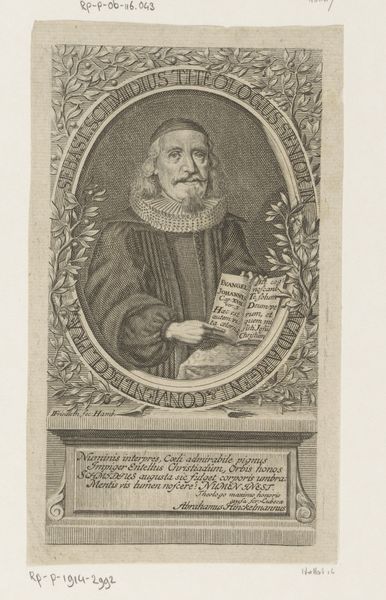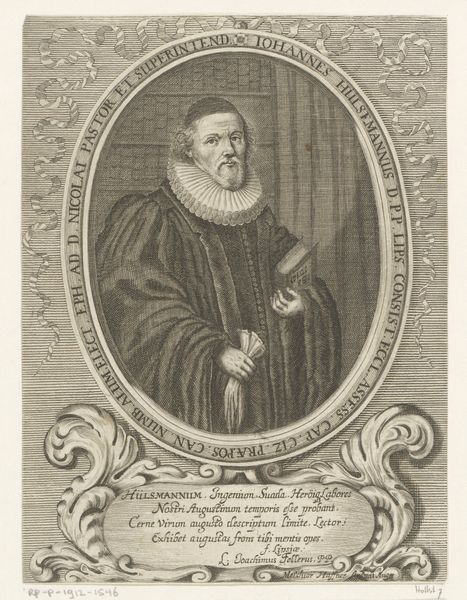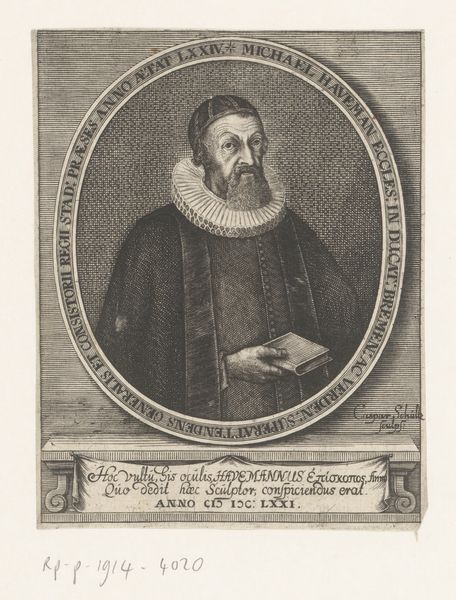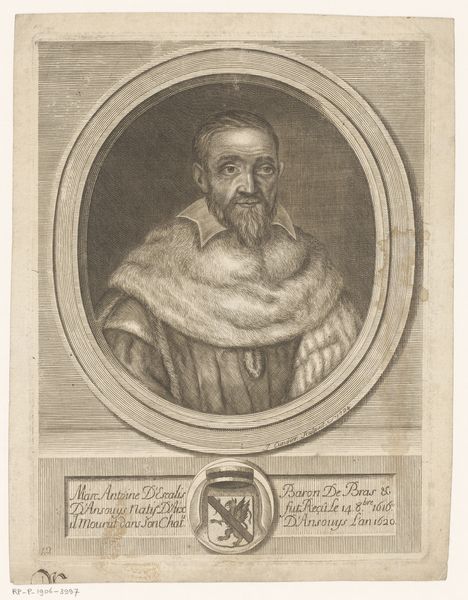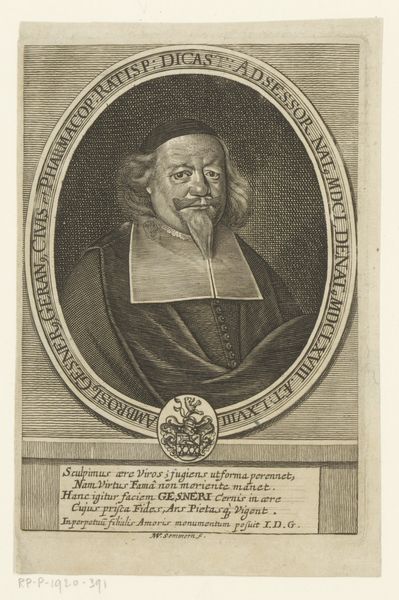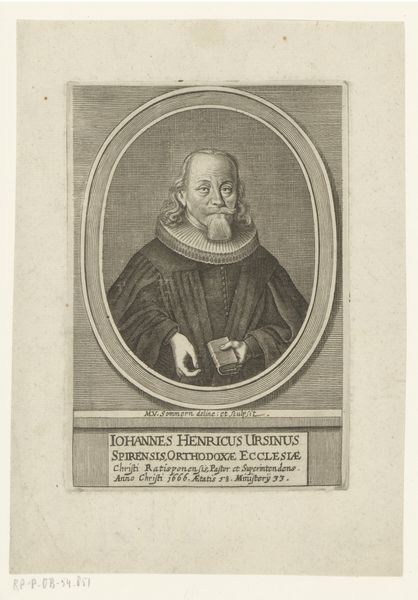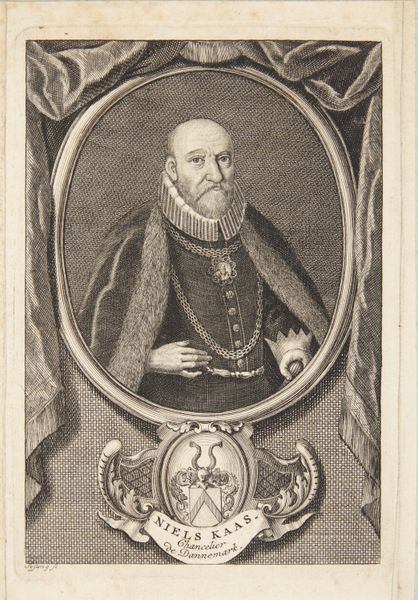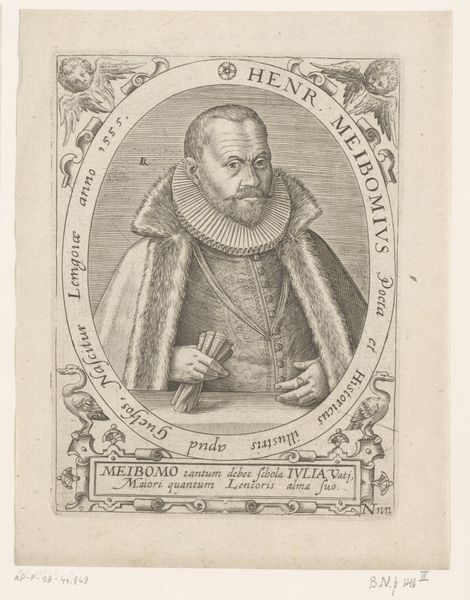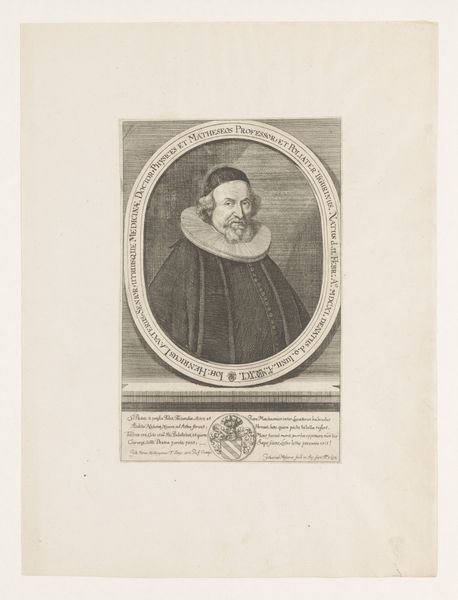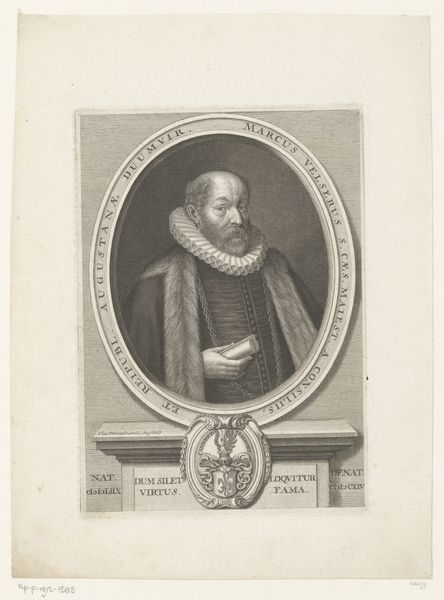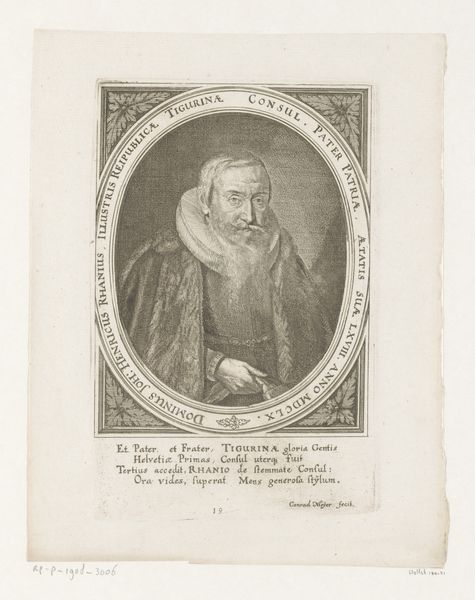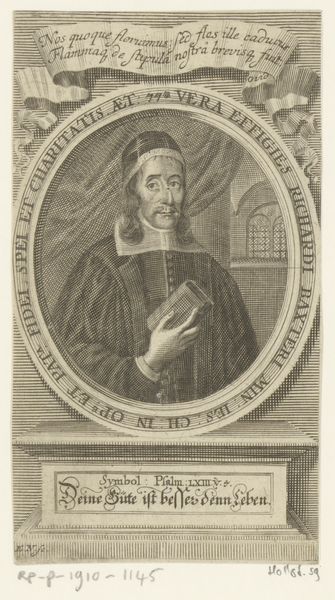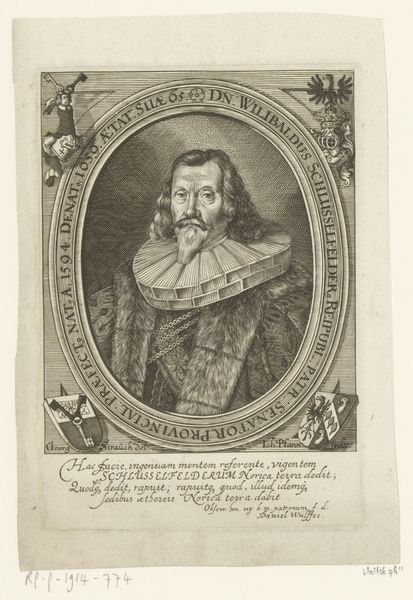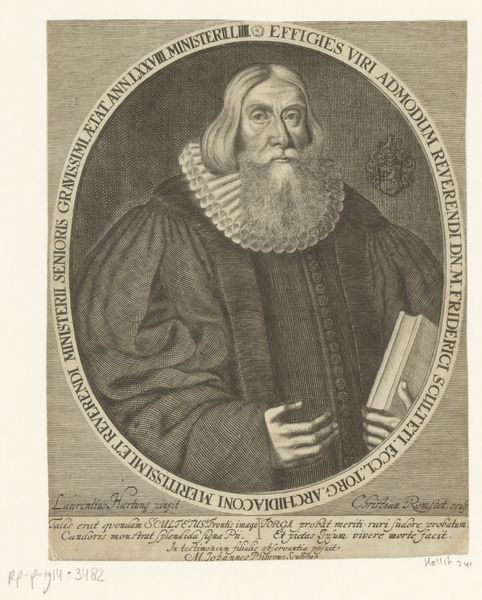
print, engraving
#
portrait
#
baroque
# print
#
old engraving style
#
charcoal drawing
#
history-painting
#
engraving
Dimensions: height 285 mm, width 191 mm
Copyright: Rijks Museum: Open Domain
Editor: This is a portrait of Johann Lay, engraved sometime between 1659 and 1721 by Georg Jakob Schneider. It’s intricate! I’m struck by the sheer detail achievable through the engraving process. What stands out to you in this work? Curator: For me, it's the printmaking process that's most compelling. Consider the labor invested in creating this matrix. The artist meticulously carves lines into a metal plate, a physically demanding task yielding multiples. This act democratizes the image, allowing wider access to Lay’s likeness. Did this proliferation influence Lay's status? Editor: That's a really interesting point! I hadn’t thought about the implications of wider access in the 17th and 18th centuries. So, it's not just the subject, but also the means of distribution that matter? Curator: Precisely! Think about the materials. The cost of copper or the availability of inks affects production. Also, the distribution network… who had access to these prints? Where were they sold or displayed? Were these portraits commissioned and, if so, what was the social contract implied by the commission? It becomes a commodity with layers of socio-economic context embedded within it. Editor: I see! Focusing on the "how" of making this image provides such different angles from which to interpret the "why" it was made. I'll never look at a portrait the same way again. Curator: Indeed. Shifting the focus from the sitter's supposed "genius" to the labor and materials helps to dissolve the boundary between art and craft. And who actually *made* this engraving; where they well known? The focus expands to consider a larger, collaborative world that produced the object.
Comments
No comments
Be the first to comment and join the conversation on the ultimate creative platform.
